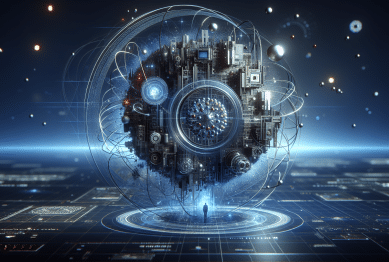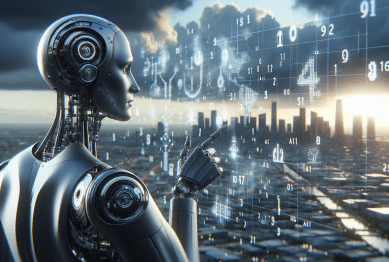Imagine a home that anticipates your needs and adapts seamlessly to your routine. This guide explores how artificial intelligence fuels the smart home revolution, revealing practical insights, opportunities, and considerations for individuals interested in building connected living spaces driven by evolving technology.
Understanding Smart Home AI Integration
Smart home ecosystems bring artificial intelligence into everyday life, fundamentally changing how appliances, sensors, and systems collaborate. With virtual assistants like Alexa, Google Assistant, and Siri now commonplace, the standard for comfort and functionality is being redefined at home. AI integration offers more than voice commands. It enables predictive maintenance, adaptive routines, and learning-based customization, allowing smart thermostats, lighting, and security devices to work in harmony. The ability for devices to learn your preferences provides unparalleled convenience, creating a hands-off experience that many find appealing. Studies suggest that a growing number of households now rely on AI-driven devices to control and optimize their energy usage and security protocols (https://www.eia.gov/todayinenergy/detail.php?id=50756).
Integration has become central for those seeking smarter living environments. Systems now connect lights, entertainment, and home security into a unified interface, often managed via smartphones or voice commands. These setups allow for scheduled automation—imagine your lights dimming as the evening sets in or your security cameras switching on the moment you leave home. Consumers are increasingly interested in interoperability—how easily devices from different manufacturers interact—and service reliability. Major brands are investing heavily in open standards and protocols, ensuring that gadgets work smoothly together, regardless of the maker.
Machine learning propels the smart home ecosystem to new heights by recognizing behavioral patterns and responding intelligently. For example, some AI-driven thermostats adjust temperature automatically by learning routines, while others recommend energy-saving habits based on historical data. This dynamic learning ensures that homes become more intuitive over time. Homeowners find value in these personalized automations, making AI integration one of the dominant forces shaping new home technology trends today (https://energy.gov/eere/buildings/articles/machine-learning-and-energy-efficiency).
Benefits of AI in Connected Homes
Smart home AI delivers tangible improvements in convenience, energy efficiency, and safety. Imagine waking up to a home that automatically adjusts blackout shades and sets the perfect morning temperature. Home automation platforms can schedule tasks, respond to real-time weather conditions, detect occupancy, and even monitor air quality. For many users, this translates into hands-free living—where routines become seamless and less interruption is needed for repetitive tasks. According to studies, home environments powered by AI have contributed to measurable energy savings, reducing power bills and supporting sustainability goals (https://www.energy.gov/science-innovation/energy-efficiency/advanced-manufacturing-office/ai-manufacturing).
Security is another compelling advantage of smart home AI. AI-enabled security cameras and sensors analyze activity in real-time, distinguishing usual movement from suspicious patterns. With features like facial recognition, alerts can be sent to homeowners if unfamiliar faces are detected or if doors are left unlocked. Some systems integrate with emergency responders, providing additional peace of mind. This advancement helps transform homes not only into more efficient but also safer places to live (https://www.dhs.gov/science-and-technology/news/2022/07/20/feature-article-ai-innovations-cybersecurity).
AI in smart homes also opens the door for accessibility features, assisting individuals with mobility or sensory challenges. Voice-activated controls, automated routines, and remote management bring new levels of independence to residents who benefit from hands-free commands and integrated notifications. The democratization of technology ensures that smart home benefits are accessible to a wide audience, supporting social inclusion and usability for different abilities. Increasingly, research highlights the social and health advantages of AI-driven home aids, especially for senior and disabled populations (https://www.nia.nih.gov/news/ai-and-technology-improve-aging).
Smart Home Devices and Popular Applications
The expanding landscape of smart home AI brings a suite of devices catering to different needs—thermostats, security cameras, smart plugs, and sensor-equipped kitchen appliances, to name a few. Each device addresses a unique functional area, yet integration remains key. Smart speakers, often the entry point for many, now serve as central controllers for door locks, entertainment, and connected lighting. This ecosystem is continuously evolving, with new products launching frequently, reflecting consumer interest in comprehensive home management and real-time interactivity.
Voice-controlled assistants have rapidly gained ground, providing hands-free solutions for playing music, setting reminders, or controlling lights. Beyond the basics, AI-powered appliances in the kitchen can suggest recipes based on what’s in the fridge or help individuals maintain grocery lists. Security systems have become more sophisticated with AI learning, recognizing familiar faces and alerting for unrecognized ones. The popularity of these tools continues to drive manufacturers to improve interoperability and innovation, creating an array of options for customizing the connected home experience.
Wearables are increasingly paired with smart home systems, allowing for health monitoring, fitness tracking, and even managing home automation without lifting a finger. Smart wristbands, watches, or even connected health sensors make it possible to trigger routines or emergency protocols based on user activity or physiological data. This expansion into personal health and wellness reflects the broader trend of smart home AI as an integral part of daily living, not just a convenience tool but a lifestyle enhancer.
Privacy, Security, and Ethical Considerations
As benefits rise, so do important questions about privacy and data protection within the smart home. Connected devices collect and analyze information to enable personalization. This, however, comes with the risk of unauthorized access or misuse. Robust encryption, regular updates, and responsible data policies are needed to prevent data breaches and protect sensitive personal information. Security experts recommend regularly reviewing device permissions and understanding what information is being stored or transmitted by home automation hubs.
Manufacturers and service providers increasingly prioritize transparency and user consent. Users are encouraged to read data agreements carefully and opt into features with a full understanding of possible trade-offs. The presence of regulatory frameworks, such as the General Data Protection Regulation (GDPR) in Europe, helps set standards for data safety and user rights. Adoption of ethical AI practices—limiting data storage, anonymizing personal information, and ensuring system transparency—is critical to building trust in these systems (https://www.ftc.gov/business-guidance/blog/2020/10/you-smart-home-product-firm-know-about-privacy).
Beyond technical measures, an ethical approach considers inclusiveness and bias. Ensuring that smart home AI systems work equally well for all types of users, regardless of voice, background, or ability, is essential. Ongoing research investigates the challenge of eliminating stereotypes from voice assistants and image recognition platforms. Public debate continues around data ownership, transparency, and how technology shapes daily routines. By prioritizing ethical frameworks, developers and end users can build more trustworthy, equitable smart home environments.
Future Trends and Opportunities in Smart Home AI
The smart home market continues to surge, reflecting new trends that promise to make AI-driven living even more integrated. Interoperability is advancing rapidly—with open-source standards enabling greater device compatibility. New AI algorithms promise more advanced anomaly detection, proactive health monitoring, and real-time language translation. As edge computing becomes prevalent, more processing happens within local devices rather than in remote data centers, enhancing privacy and speed. This shift offers both faster response times and lower data transmission risks.
Smart energy management is poised to become an even bigger focus. AI-enabled platforms help users monitor electricity consumption in granular detail and recommend usage habits that support sustainability. Some systems automate decisions in real time, like switching to backup power during peak demand. The convergence of smart grids, renewable energy, and connected home devices is opening new avenues in the pursuit of greener, more autonomous living. Households can now benefit from not just convenience, but also lower environmental footprints.
The next era may see AI embed itself deeper into everyday experiences, from health diagnostics to predictive maintenance and advanced entertainment controls. Partnerships between tech companies, utility providers, and health institutions are arising, expanding the reach of home automation into domains such as telemedicine and caregiving. For individuals interested in joining this movement, grasping the ethical considerations and staying informed about emerging standards will remain crucial. The journey is ongoing—and technology keeps evolving, offering new ways to enhance modern living environments.
References
1. U.S. Energy Information Administration. (2023). Today in Energy. Retrieved from https://www.eia.gov/todayinenergy/detail.php?id=50756
2. U.S. Department of Energy. (2022). Machine Learning and Energy Efficiency. Retrieved from https://energy.gov/eere/buildings/articles/machine-learning-and-energy-efficiency
3. U.S. Department of Energy. (n.d.). Artificial Intelligence and Manufacturing. Retrieved from https://www.energy.gov/science-innovation/energy-efficiency/advanced-manufacturing-office/ai-manufacturing
4. U.S. Department of Homeland Security. (2022). AI Innovations for Cybersecurity. Retrieved from https://www.dhs.gov/science-and-technology/news/2022/07/20/feature-article-ai-innovations-cybersecurity
5. National Institute on Aging. (2022). AI and Technology to Improve Aging. Retrieved from https://www.nia.nih.gov/news/ai-and-technology-improve-aging
6. Federal Trade Commission. (2020). You and Your Smart Home Product: What to Know About Privacy. Retrieved from https://www.ftc.gov/business-guidance/blog/2020/10/you-smart-home-product-firm-know-about-privacy









